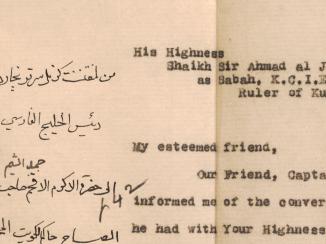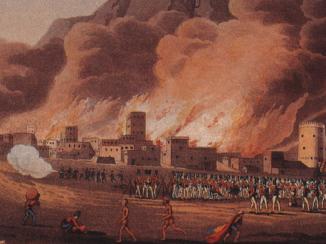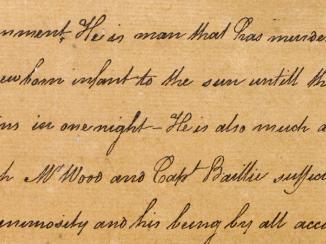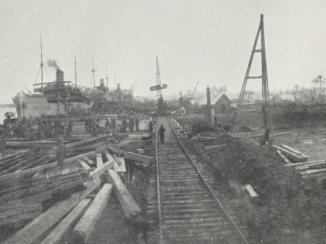Overview
George Nathaniel Curzon (1859-1925), also known as Lord Curzon of Kedleston (then later Earl Curzon, and finally 1st Marquess Curzon of Kedleston), was, among other roles, Viceroy and Governor-General of India (1899-1905) and Secretary of State for Foreign Affairs (1919-24). An energetic and committed imperialist and administrative reformer, his legacy in the Indian subcontinent is deeply controversial but enduring.
Curzon’s private papers Documents collected in a private capacity. collection is vast in volume and scope. He collected and meticulously organised great numbers of papers, newspaper cuttings, maps, and publications relating to his positions in office, the many committees he sat on, and his numerous projects, interests, and responsibilities. A man of his class and time, Curzon was a prolific writer The lowest of the four classes into which East India Company civil servants were divided. A Writer’s duties originally consisted mostly of copying documents and book-keeping. of letters, and much of his private collection consists of correspondence of an official and private nature. Of all of this material, readers can find that which directly relates to Persia [Iran], the Gulf, and the Middle East more generally on the QDL.
Young Curzon: Civil Service and Travels in Persia
Curzon’s papers are organised in a roughly chronological/biographical way, divided into 145 series. The first fifteen series (1-15) in the collection are from his early life, prior to his appointment as Viceroy of India. As a Member of Parliament and during service in the India, Foreign, and Prime Minister’s offices, he developed a passionate and romantic interest in the “East”, particularly Persia, which led to extensive travels in the region between 1888 and 1894. Series 8 relates to Persia and includes notebooks from his travels in the country in 1889-90, as well as the reports, memoranda, and correspondence he collected on any aspect of Persia in which he took an interest (see Mss Eur F111/58-66, 68, and 71). With some exceptions due to copyright restrictions, the whole of Series 8 is available on QDL.

Parts of Series 12 and 13, which comprise correspondence and various Government publications and other papers from 1870-1904, and which once again reflect Curzon’s interests, are also available. These include Foreign Office papers on Persia, journey reports from Persia and Turkish Arabia, intelligence reports on the Persian Army, royal family and political elite, and a comprehensive, four-volume Gazetteer of Persia.
Running an Empire: Curzon as Viceroy
Series 16 to 68 cover the period of Curzon’s Viceroyalty in India. Each Series relates to a particular subject, for example, the North-West Frontier Region of British India bordering Afghanistan. , or consists of correspondence with a particular person or people, such as the Queen-Empress and King-Emperor, or the Secretary of State for India. Of these, parts of Series 17 and 23, both consisting of correspondence, are on the QDL. Some of this correspondence is in the form of printed collections of Curzon’s official letters and telegrams to and from the Secretary of State for India (see Mss Eur F111/158-64, 69-75). Series 23 contains private correspondence on particular subjects. The only file from this Series currently on QDL comprises letters from the Foreign Department of the Government of India concerning the official summaries of Curzon’s Indian administration. It gives a good indication of his obsession with his legacy and his need for control, even after leaving office.
Series 32 concerns Persia and consists of a wide range of material on the country, as well as the connected subjects of the Gulf and the Baghdad Railway. Most of this Series is available on QDL. Series 41 to 68 are made up of official printed material, publications, and maps. These all concern the British Indian Empire and are organised into different subjects. Included are the printed summaries of Curzon’s vice-regal administration (Series 42) and copies of official papers (Series 43), from which selections can be found on the QDL (see Mss Eur F112/449 and 450). Series 61 to 65 concern the foreign affairs of the Government of India and are organised by country or region. Series 63 covers Persia and is largely available on QDL. Series 68 consists of maps and posters from Curzon’s collection and those of geographical relevance can be viewed on QDL.
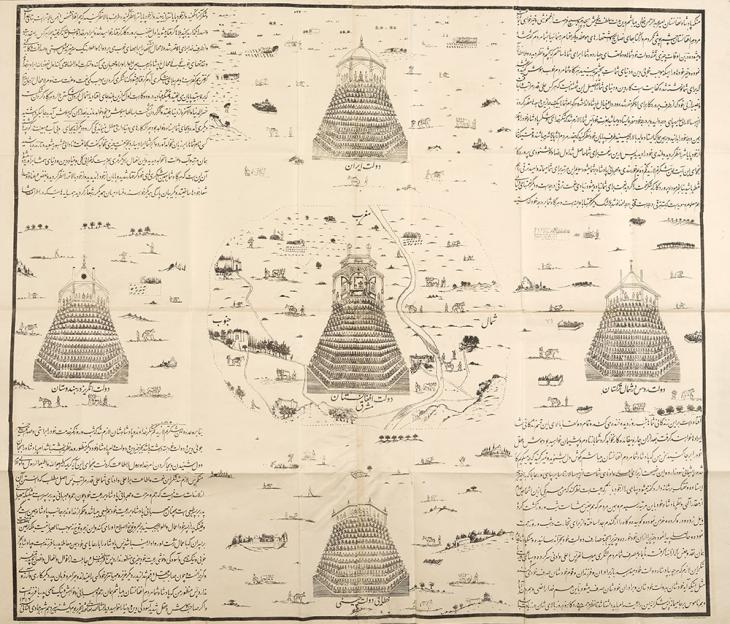
Return from India, Personal Loss, and World War
The period between Curzon’s time in India and his appointment as Foreign Secretary is covered in part by series 69-99. In 1906, soon after their return from India, his first wife, Mary Leiter, died, and Curzon spent much of his time on personal affairs. Before long he was publicly active once again, becoming Chancellor of Oxford University in 1907 and being elected to the House of Lords a year later. Throughout, he continued to write, correspond, and publish on matters that were of interest or importance to him. Of these papers, Series 82 and parts of 89 are of relevance, containing correspondence from a wide range of Curzon’s associates, including diplomats, political and military officers, explorers, journalists, and businessmen, as well as reports and other papers. These are all connected to Persia and cover subjects such as the Trans-Persian Railway, the Baghdad Railway, relations with Russia and Russian activities in Persia, and internal political affairs.
During the First World War, Curzon was a member of the War Cabinet and heavily involved in wartime policy as Lord Privy Seal and Leader of the House of Lords. Series 90-99 cover this time and the War in general. Selections from Series 92, which in part concerns the Mesopotamia Expedition, and Series 99, comprising maps, can be found on QDL.

The Last Posting: Foreign Secretary
In 1919 Curzon was made Foreign Secretary in David Lloyd George’s Government. As such he played a significant part in post-war peace negotiations and, in particular, the settlement of former Ottoman territories and Egyptian independence. Series 100-116 cover Curzon’s time as Foreign Secretary (1919-24). These are mainly organised by country, region, or historical event. Of these, the series relating to the Near and Middle East (Series 102), Egypt (103), Mesopotamia (104), Syria and Palestine (105), and Persia (107) are on QDL, in part or in full. Series relating to his time on several Middle East committees (Series 108) and his involvement in the Lausanne Peace Conference, 1922-23 (Series 112) are also available, at least in part, as well as relevant maps.
Series 117-140 are those of Curzon’s papers that do not directly relate to his position within Government. They mostly consist of his writings on a wide variety of subjects, his financial papers, documents relating to his properties, miscellaneous correspondence, and some posthumous papers. Of these, Series 123, relating to his book Persia and the Persian Question, and Series 125, concerning his work on a map of Persia, are on QDL.

Legacy
Like its creator, Curzon’s collection of private papers Documents collected in a private capacity. forms a large and lasting legacy. His zeal and intellectual ability are evident, but there are many for whom he represents oppression, theft, tragedy, and imperial arrogance. These records provide a window on not only his life and achievements, but also the administration of an empire and a pivotal period of British imperial history.





